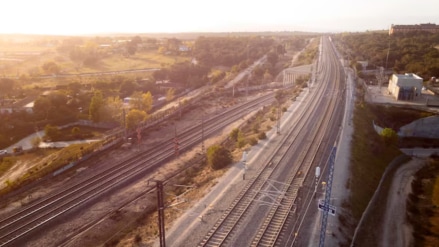The Indore-Manmad railway line project, recently approved by the Cabinet Committee on Economic Affairs, is set to transform connectivity between two major commercial hubs, Mumbai and Indore, while also contributing to India’s broader goals in trade, tourism, and environmental sustainability. With a total length of 309 kilometers and a projected cost of Rs 18,036 crore, the project is expected to be completed by 2028-29.
Boost to Trade and Industry
This new railway line will significantly enhance freight movement, providing a vital link between the Pithampur Auto Cluster in Madhya Pradesh, which hosts over 90 large units and 700 small industries, and major ports like JNPA in Maharashtra. The route will facilitate the transport of essential commodities such as agricultural products, fertilizers, steel, and cement, with an estimated additional freight capacity of 26 million tonnes per annum (MTPA). This connectivity will also benefit millet-producing districts in Madhya Pradesh and onion-producing regions in Maharashtra, boosting distribution across northern and southern India.
Tourism Opportunities
The Indore-Manmad line is expected to boost tourism by providing a shorter route between the western and central parts of the country. It will enhance access to popular destinations like Ujjain, home to the Sri Mahakaleshwar Jyotirlinga Temple, attracting more visitors to this culturally rich region. The improved rail network is anticipated to bring a significant increase in tourist footfall to these religious and historical landmarks.
Environmental Benefits
In line with India’s climate goals, the project supports the shift to more sustainable transportation. By reducing the need for road transport, it will help cut down on oil imports by 18 crore litres and lower CO2 emissions by 138 crore kilograms. This reduction is equivalent to the environmental impact of planting 5.5 crore trees, making the railway line a key contributor to the country’s green initiatives.
